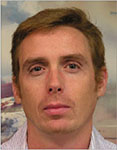Fault-seal potential of the Palaeozoic in the northwest Canning Basin
Julian Strand A , Antoine Vaslin A and Laurent Langhi ACSIRO
The APPEA Journal 52(1) 427-436 https://doi.org/10.1071/AJ11034
Published: 2012
Abstract
As part of a Geological Survey of Western Australia organised review of the Canning Basin involving UWA and CSIRO, the fault-seal potential for the northwest Canning Basin has been analysed. This study has two foci: firstly identifying potential for fault-bound hydrocarbon reservoirs in the Early Permian (Poole Sandstone and Upper Grant Group). Secondly, James Price Point, 55 km north of Broome, is the chosen location for an LNG facility to service the northern North West Shelf gas fields. As such, the study aims to highlight potential CO2 sequestration reservoir sequences occurring inside 200 km of James Price Point, the economically feasible distance for CO2 delivery to an injection site.
Historically, hydrocarbon exploration drilling in the Fitzroy Trough targeted anticlinal structures, which proved unsuccessful due to localised, but significant, erosion of the Permian sequence including the Noonkanbah Formation top-seal on anticlinal crests. Given there is potential for untested, fault-bound traps to exist, which might provide an alternative to the anticlinal traps, it will be useful to identify the distribution of shale-rich, top-seal and fault-seal prone sequences, and where these occur at suitable reservoir depths.
The study shows the Early Permian sequences on the flanking terraces of the Fitzroy Trough commonly have suitable top-seal and fault-seal prone sediments. In wells analysed in the Fitzroy Trough itself, the Early Permian sequence is poorly represented, but Permo-Carboniferous sediments observed indicate some sealing potential might exist there. Moving south onto the Broome Platform and into the Wiluna Sub-basin, the Early Permian sequences still display some sealing potential, but Ordovician units might provide more suitable targets for sequestration in these areas.

Julian Strand is a senior research scientist at CSIRO Earth Science and Resource Engineering, primarily working on structural geology and issues related to incorporating structural geology into reservoir and basin models. Julian has been based in Perth since 2005 and was part of the Fault Analysis Group for nine years at the University of Liverpool and latterly UCD in Ireland. He attended the University of Liverpool and Imperial College, London. Member: AAGP and EAGE. Julian.Strand@csiro.au |

Antoine Vaslin attended Angers University, obtaining a geoscience degree. He then went on to gain a Master’s degree in geological reservoirs from the Université des Sciences et Techniques du Languedoc (Montpellier II). vaslinantoine@hotmail.fr |

Laurent Langhi is a senior research scientist and research team leader with CSIRO Earth Science and Resource Engineering and has 10 years of experience in petroleum geology and exploration geophysics. After earning an MSc and PhD in geology, he worked as a researcher at UWA and as an exploration geologist/geophysicist in the oil and gas industry. In 2006, he joined CSIRO Petroleum, focusing on structural geology, trap integrity prediction, assessment/visualisation of fluids migration, and geomechanical modelling. He also works in the fields of seismic attributes analysis, and quantitative seismic for conventional hydrocarbon and CCS. laurent.langhi@csiro.au |


